UPDATED REVIEW – January 2, 2014 – The Yamaha CVP500 series has been discontinued and upgraded to the new CVP601, CVP605, CVP609, & CVP609GP (mini grand version) digital pianos. These new models are available in the US now but are more money than the CVP500 series. The 600 series is upgraded in cabinet design, piano sound, key action, internal speaker systems, and overall features and include user friendly touch screens (all but the CVP601) instead of the former non-touch screens (it’s about time). Go to the following link for my review of the new lowest priced model Yamaha CVP601: Yamaha CVP601 Review
If you like being on the cutting edge of music technology and quality piano reproduction when it comes to spending your money, then getting the new CVP600 series might be the way to go, especially when it comes to the mini-grand version since that model had not changed from the older 400 series until now. So the mini grand version will be going from the 400 series to the new 600 series in one leap, and it’s about time Yamaha made that happen too! However that model is selling for close to $15000…YIKES…that’s a lot of money, but if you got it why not spend it!?
With regards to the recently discontinued CVP500 series…my previous review is here: Yamaha has a top of the line series of digital pianos called the CVP (stands for Clavinova Versatile Piano). They have made the CVP models for many years and their current incarnation is the “500 series.” In the last few years they have had the “300” & “400” series CVP’s, but it’s now the “500” series (makes sense). The lowest priced model is called the CVP501 and then goes up to the CVP509. Rather than get very in depth about each one of them (they have many features and you can find them on the Yamaha web site), I will say these pianos are lots of fun, have nice user interfaces (overall) and offer many features for beginners and professionals. However, I think these instruments are somewhat pricey (as will be the upcoming 600 series)…even when they are “on sale.” In the US market, the CVP pianos are sold exclusively in local piano stores by piano salespeople… you cannot normally order them on-line. Pricing varies from store to store but when they are “on-sale” in any given store, you can figure the CVP501 should be priced at approx $3300 or so, the CVP503 at approx $5000 or so, the CVP505 at approx $6500, and the CVP509 at approx $8500….give or take a few hundred and depending on cabinet color/finish. These prices are approximate and you can probably purchase one for less (or more) depending on the dealer.
The Clavinova pianos are higher priced partly because they are only sold in selected Yamaha piano stores, and also because the Yamaha name usually commands a higher price because they are known as an excellent acoustic manufacturer. In my years of experience playing these pianos and knowing others who own them, most owners of these CVP pianos unfortunately use no more than approx 25% of all the features these pianos have built in to them (which is typical of other brands too). That may change on the 600 series because it will have a touch screen and be more user friendly. The CVP500 models do sound & play great, there’s no getting around that. The CVP’s are primarily known for their very realistic and musically correct accompaniment style background arrangements (especially on the 505 & 509) along with improved instrument sounds with articulation like guitars, sax’s, horns, strings, electric pianos, and organs. They also have somewhat easy to use display screens (the 600 series touch screens will be much more user friendly) with larger LCD displays (color on 2 of them), especially on the CVP509 (that display screen is a huge). The CVP501 & 503 cabinets are pretty basic although some of CVP models are available in the polished ebony finish which is very attractive, but they cost quite a bit more money. Otherwise the lowest priced cabinets are in the simulated rosewood finish.
In our tech world of iPads, iPods, LCD color TV’s, etc, you would think for the higher selling price, the CVP 501, & 503 user interface monitor screens would be larger and in color. As an example, the CVP503 has a black & white screen and it’s also not that big, and yet the piano sells for over $5000 at discount. However, the CVP503 piano does sound quite nice and feels pretty good as far as key action and there are a lot of cool rhythms and instrument sounds on that one. But for around $5000 it should look extra good and it should also have a large user interface color screen which the CVP503 is lacking (a good reason why this model wasn’t brought back in the 600 series). I do like the follow-along lights teaching system on the CVP501 and the other CVP’s, but the 501 model only has the basic Clavinova GH key action response as opposed to the better GH3 in the other CVP models which has the additional key sensor (hence the “3” in the GH name). However, the new CVP601 (coming out next year) does have the better GH3 key sensor action as well as USB audio wav file recording (in addition to the normal MIDI recording & playback) which allows for higher quality CD type recordings and playback of your songs which almost all good digital pianos have now starting at about $1500 and are other good reasons to wait for the new 600 series:)
The top model CVP509 is an excellent instrument with the GH3 wood key action and synthetic ivory key tops. It’s great sounding, lots of fun with useful features, incredibly realistic instruments, style arrangements & rhythms, but it’s also very pricey. One of the problems with digital pianos selling (at discount) in higher price ranges like these models do, is depreciation. In 5 years or so they’re likely to lose perhaps as much as half their cost or more based on accelerated depreciation of high end instruments along with newer technology that comes out in the future. But for some people who have the money and/or are planning on keeping the piano for a very long time, or they know this will be their last piano, then faster & larger depreciation is irrelevant and the CVP’s (especially the CVP505 & CVP509) are great instruments and super fun to play!
People generally purchase these Yamaha Clavinova CVP pianos because they want great quality sounds, super realistic chord arrangements, and realistic upright piano key action (they are not grand piano key actions), and these pianos certainly deliver in that way. Some people also like to use the multi-track player/recorder, vocal harmonizer with built-in mic input, built-in lesson and notation software, and a few of the other features. But beyond that, many of other features that are in the CVP’s are (in my experience) seldom used by most US buyers.
By the way, with regard to the follow-along visual lights above the keys, this feature shows you what key to press when playing along with the built in songs and it will even wait for you to catch up. That is a fun feature and can be useful in the beginning for adult students and children of all ages. But at the end of the day, teachers generally don’t like those things and it can create bad habits for younger students who take lessons and want to progress upward into new skill levels. However for adults (and very young children) who just want to play for fun and get music out of the piano as quickly as possible, the follow-along light system definitely makes that happen.
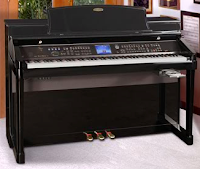 |
| Kawai CP179 |
Another line of pianos similar to the Yamaha CVP’s you should consider is the Kawai CP models. Kawai is well known for their professional concert grand pianos and digital home pianos and their CP series interactive series are definitely competition for the Yamaha’s. Coincidentally, Kawai and Yamaha have their international headquarters in the same city in Japan and are well known rivals. Both Kawai & Yamaha now offer touch-screens on these interactive models, and in my opinion the CP series has a more elegant styling in their furniture cabinets. Another big difference between the Yamaha and Kawai is in their top models (Yamaha CVP609 vs Kawai CP179). Kawai offers a grand piano wood key mechanism and Yamaha has an upright wood key mechanism) and I like the Kawai version better. But you’ll have to be the judge of that for yourself. Before you jump into a Yamaha, definitely check out a Kawai and you can go to their US web site to get more info.
| Casio PX780 |
Another, much lower priced piano that is going to be big hit when it comes out around beginning of April for its useful features, nice key action and good piano sound along with a very low price, is the Casio Privia PX780 ($999 internet price – left pic). It has surprisingly realistic piano tone & touch, ivory feel keys, 128-note polyphony, educational technology, and many other features that people want in a much lower price including 360 nice accompaniment arrangements with fingered & one fingered chord play, which is great fun at any skill level. The PX780 can even directly interface by a USB port with a laptop or Apple iPod/iPod 2 for greater expansion using interactive new computer music software for lessons, composition, arranging, and full music notation and digital sheet music that is readily available in the marketplace. Also, Yamaha makes a lower priced digital piano with many interactive features called the Arius YDPV240 which is internet priced at just $1999 in the US. It’s a fun instrument and I recommend it although that model uses the basic lighter weight Yamaha GHS key action and only has 64-notes of polyphony but is generally fine for most beginner and recreational players or students. However at $1000 more than the new Casio PX780, the Yamaha is somewhat hard to justify being worth the extra money in my opinion. I have also done an in-depth review of the lower priced Casio PX780, so if you’re looking to get into that lower price range, then check it out at this link: Casio PX780 review
You can certainly be happy with any of the Yamaha CVP pianos and they are fun to play. But once you get into that price range you should also consider other options just to be sure you are making the right decision.
If you want more info on these and other pianos and lower prices than internet or store discounts, please email me at tim@azpianowholesale.com or call me direct at 602-571-1864




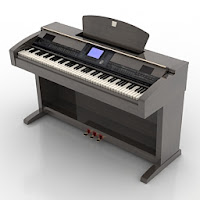
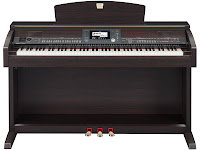
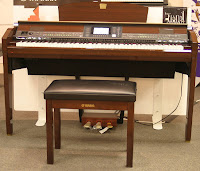
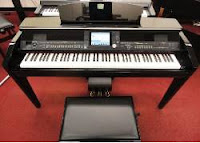










I totally disagree, the 509 is an amazing piano and I would gladly spend the $ now if it makes me happy. Who cares about deprication, the product is so good I would keep it for a very long time. Thanks!
I agree with your assessment of the CVP509 and that it is an amazing instrument. I mentioned that in my blog and I also mentioned that there are people (like you) who WILL spend the money (assuming they have it) if the instrument makes them happy. However, I believe it is still too much money and should sell for less than $5000 (actually less the 4K would be best). And quite honestly, there is normally a huge markup in those pianos which helps keep the price up and the product out of the hands of the mainstream buyer. And as I said before, depreciation will happen and to some people, it is important to consider that before the purchase.
In Asia, CVP505 and 509 goes for about USD3900 and USD5800 respectively. It is even cheaper in Indonesia where it is assembled due to the big savings in shipping costs of these big digital piano.
However the street price of Casio AP620 are about USD2100 which is higher than in USA because the distributors here have different marketing strategy.
The Tyro models are indeed a better choice for musician who want the best voice features. Their can be priced lower because there is no big bulky wooden cabinet which is quite empty inside unlike real acoustic piano.
If you're going to use this digital grand as a controller for a solo gig, it works perfect. I've got the Roland XR sound module connected to it with a MIDI cable. Therefore, I can do anything with this little grand. I see and feel your pain about this digital grand as far as teaching, but sometimes it's advisable to look at both sides of the story. As an expert that you claim to be, could you please comment on the positive as well? Many people could use it. Thank you for your opinion, anyway.
Thank you for your comments. Using any model in the CVP series as a controller generally does not happen very often although as you say, it can be effective. But the fact still exists that the new CVP's are overpriced in the US and it makes for a very expensive controller. As I mentioned in the blog, the 505 & 509 are great instruments for what they offer, just too much money.
A big advantage for Yamaha range of keyboards and digital piano is the enormous library of accompaniment Styles available freely on the internet, both original Yamaha Pro styles as well as a few converted from other brands.
How would you compare the Roland HP307 and the Yamaha CVP509. Both pianos are priced close here in Canada.
I have never commented to a BLOG before . . In fact, I have never even read one before! So forgive me if I step on anyone's toes. But I have wanted a polished ebony CVP (Not necessarily the highest level models) for years but cannot afford a new one. Yamaha scares me away from buying on EBAY by advertising that they may not be compatible with American electrical power, and may be stolen, and many other scary things. So I would like to know the truth. I would even buy one from Asia if they are reliable. But I could never afford a new one out of any American store. Can you help?
IM selling my CVP-207 here in Florida. IM playing guitar now.
Hi! I've been reseaching digital pianos for some time. I really enjoy the advice given on this blog. My sister-in-law owns the Yamaha CVP 590, lucky her, and is in love with it. I am a value shopper and I've been trying to find another piano with similar capabilities for lower cost. The advice about the Casio Celviano AP620 is very helpful and now I'm leaning towards that piano.
My son and I play. He will undoubtably be able to help me with the technology part of it. We are interested in composing, arranging, recording for performance purposes. I'm a music teacher and would like to record an accompaniment so I can conduct a choir. Is all this possible with the Casia Celviano piano? My mind is getting a little blurry with all the info. and any clear answers are welcome!
Thanks.
Denise
Denise,
You ask some good questions. I would be happy to give you specific advice and recommendations if you email me directly at the email address on this blog review.
Thank you
I am a professional pianist. The church I work for has purchased a 505. Gorgeous sound through a simple hookup to the pa system. The music writing feature is amazing. Record what you wish, hit the "score" button, the music comes up on the screen then connect your printer to the instrument and there it is. Gone are the days of pain-staking ink and white-out. This makes it worth the money for the composer/musician.
The case could be improved on. For the money it could be built sturdier.
Looking for a new CVP 505 fo $5,000…any seller?
Kurzweil makes a Digital grand aswell and it can do
32 layers of sound for some amazing sounds.
It's stupid to sell the new ones for more than $3,000 dollars each.
It's digital, it's not a real piano!
Has anyone had trouble with high humidity. We live in Queensland, Australia and on a canal block. My CVP 501 stopped. It is 4 1/2 years old. I did ring one repairer and he said that a certain computer part has probably been damaged with the high humidity and the part is at least $A900 + what I have to pay in labour. I am disappointed as I would bought an Acoustic piano if I had known I would have trouble with this piano.
high humidity is not a friend of acoustic pianos either. It can cause damage over time as well as create instability with keeping the piano in tune and in the key action movement of an acoustic piano.
I just bought a CVP 601 today…I'm waiting to have it delivered…I have a baby grand acoustic piano, but wanted a digital piano because my teacher has one, and I like playing "cue time" on it…I'm nervous that I just made a frivolous expense…this IS a good digital piano thought right? With delivery and tax it came to just under $4,000…that seems about right, right? I'm panicking a little…
very nice piano…you will like it a lot. Price is a fair deal
i saw a cvp 609 demonstrated and was very imprerssed. i've found a cvp 505 2nd hand and wonder what i'm gaining/losing by choosing a cheaper outlay over higher investment? connectivity? functionality? interface?
I love this piano. It started to make this abnormal sounds at the touch of a key. A week later the piano wouldn't play a single sound still turns in. Someone help please it's a mdg 100 micro digital grand piano